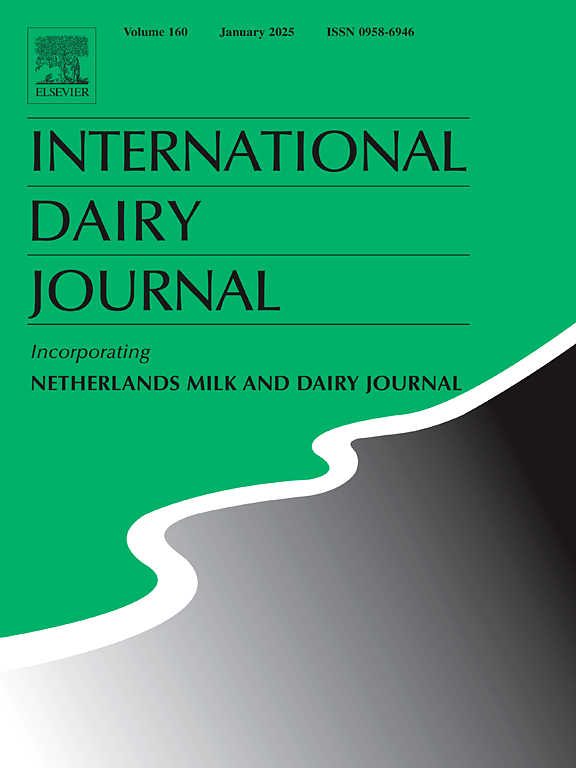生乳辅助培养物如何影响奶酪中的微生物多样性
IF 3.4
3区 农林科学
Q2 FOOD SCIENCE & TECHNOLOGY
引用次数: 0
摘要
天然牛奶发酵剂,如意大利的lattoinnesto,在传统的奶酪生产中比天然乳清发酵剂更罕见,代表了一个较少研究的利基市场。本研究旨在探讨牛奶辅助培养物如何增强微生物多样性,建立风土与奶酪之间的联系,稳定生产变化,并影响半硬奶酪的香气特征和安全性。天然牛奶辅助培养物是通过自然发酵从生牛奶和热牛奶中产生的,并与商业发酵剂结合用于酸化生产Vacherin Fribourgeois模型奶酪。由原料奶制成的奶酪比由热牛奶制成的奶酪表现出更多样化的风味特征和更高浓度的几种挥发性化合物。在含有丰富的乳乳酸菌样辅助培养物的奶酪中,蛋白质水解的增加与风味相关化合物水平的增加和helveticus乳杆菌的相对丰度相关。研究结果强调了基于牛奶处理和天然牛奶添加剂培养的微生物组成和风味特征的显着差异。本文章由计算机程序翻译,如有差异,请以英文原文为准。
How raw milk-based adjunct cultures influence microbial diversity in cheese
Natural milk starters, like Italy's lattoinnesto, are rarer than natural whey starters in traditional cheese production, representing a less studied niche. This study aimed to investigate how milk adjunct cultures could enhance microbial diversity, establish a link between terroir and cheese, stabilise production variations, and influence the aroma profile and safety of semi-hard cheeses. Natural milk adjunct cultures were produced from raw and thermised milk by spontaneous fermentation and utilised to produce Vacherin Fribourgeois model cheeses in combination with a commercial starter for acidification. Cheeses produced from raw milk exhibited more diverse flavour profiles and higher concentrations of several volatile compounds than those made from thermised milk. The increased proteolysis in cheeses with enriched lattoinnesto-like adjunct cultures correlated with increased levels of flavour-related compounds and relative abundance of Lactobacillus helveticus. The findings highlight significant differences in microbial composition and flavour profiles based on milk treatment and natural milk adjunct cultures.
求助全文
通过发布文献求助,成功后即可免费获取论文全文。
去求助
来源期刊

International Dairy Journal
工程技术-食品科技
CiteScore
6.50
自引率
9.70%
发文量
200
审稿时长
49 days
期刊介绍:
The International Dairy Journal publishes significant advancements in dairy science and technology in the form of research articles and critical reviews that are of relevance to the broader international dairy community. Within this scope, research on the science and technology of milk and dairy products and the nutritional and health aspects of dairy foods are included; the journal pays particular attention to applied research and its interface with the dairy industry.
The journal''s coverage includes the following, where directly applicable to dairy science and technology:
• Chemistry and physico-chemical properties of milk constituents
• Microbiology, food safety, enzymology, biotechnology
• Processing and engineering
• Emulsion science, food structure, and texture
• Raw material quality and effect on relevant products
• Flavour and off-flavour development
• Technological functionality and applications of dairy ingredients
• Sensory and consumer sciences
• Nutrition and substantiation of human health implications of milk components or dairy products
International Dairy Journal does not publish papers related to milk production, animal health and other aspects of on-farm milk production unless there is a clear relationship to dairy technology, human health or final product quality.
 求助内容:
求助内容: 应助结果提醒方式:
应助结果提醒方式:


